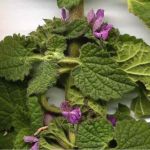| Common Name: |
Black Horehound |
| Botanical Name: |
Ballota nigra |
| Genus: |
Ballota |
| Family: |
Lamiaceae |
| Native Location: |
Europe, Asia; naturalized in N America |
| Cultivation: |
Well-drained soil in sun or partial shade. |
| Propagation: |
By seed sown in spring; by division when dormant. Ballota nigra 'Archer's Variety' does not come true from seed. Ballota nigra self-seeds readily. |
| Harvest: |
Whole plants are cut as flowering begins and dried for infusions, liquid extracts, and tinctures. Fresh herb may be used to make a syrup. Renew stocks of dried herb annually. |
| Variations: |
Archer's Variety
Has white marked foliage |
| Height: |
40cm-1m (16-36in) |
| Width: |
24-60cm (10-24in) |
| Hardiness: |
Z4-9 |
| Parts Used: |
Whole plant |
| Properties: |
An unpleasant-tasting, expectorant herb that stimulates the uterus, and calms spasms, especially in the digestive and bronchial systems. It is effective in controlling nausea and vomiting. |
| Medicinal Uses: |
Internally for nervous dyspepsia, motion sickness, morning sickness in pregnancy, menstrual disorders, and bronchial complaints. |
| Bibliography: |
Encyclopedia of herbs by Deni Brown Copyright © 1995, 2001 Dorling Kindersley Limited. pg 140 |
